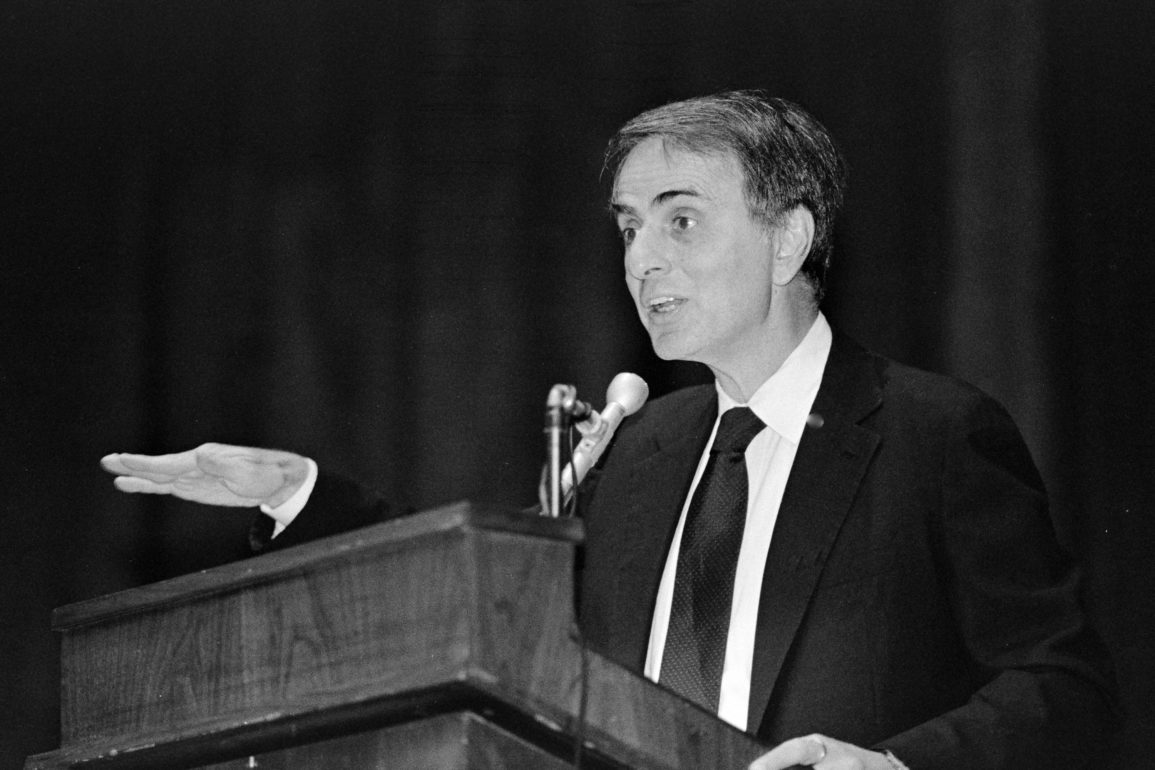At a glance:
- Carl Sagan kept his cannabis advocacy quiet due to negative social and political perceptions of cannabis in the 1960s and 1970s
- Wrote a very famous essay under the “Mr X” pseudonym for Lester Grinspoon’s Marihuana Reconsidered book in 1969
- The essay is an ode to cannabis use. Found a new appreciation for art and food, as well as boosted his productivity (you can find out why later on in this article)
- Sagan also believed in cannabis legalization, believed medical cannabis should be widely used
- He disliked the War on Drugs, sent secret letters to drug organizations
- He used cannabis before he died of bone marrow disease/pneumonia complications to combat nausea and decreased appetite
Carl Sagan was a one-of-a-kind intellectual. Forward-thinking, innovative, and rational. His career was defined by making science, space, and the universe cool again. He wanted a much deeper, more universal understanding of our planet and beyond, revolutionizing the way we understand astronomy, planetary science, cosmology, and astrobiology.
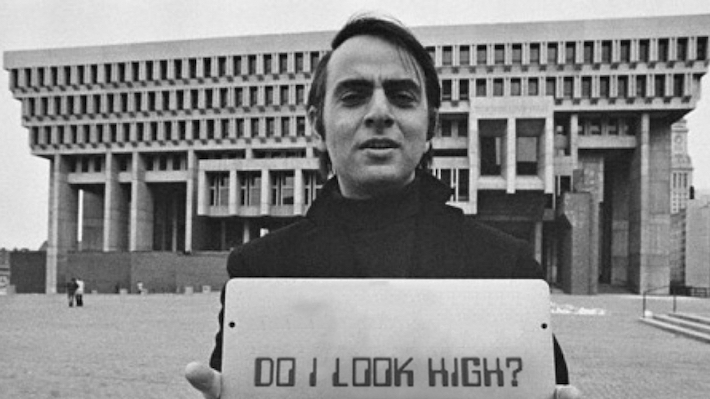
Throughout his career, Sagan was committed to spreading his philosophy. His most famous achievement was (and still is) the thirteen-part educational television series Cosmos: A Personal Voyage, which later became the foundation for his award-winning book Cosmos.
His academic and professional achievements spanned decades. He worked with NASA as a scientific advisor and consultant, briefing Apollo astronauts before their flights to the moon. He was also a highly regarded Harvard University professor and researcher, later becoming a pioneer of exobiology at Cornell University.
When news broke out of Carl Sagan’s death in 1996, global mourning and posthumous praise stood shoulder-to-shoulder amongst major publications. The New York Times, Associated Press, The Independent, and Spokesman all ran in-depth obituaries lamenting his lifelong dedication to space and the universe, as well as his ambition to expose the secrets of the cosmos.
Now, nearly 15 years after his death, Sagan’s monumental influence is still as relevant today as it was back then. Many believe there will never be anyone like him again. Smithsonian Magazine called him “irreplaceable” and the ultimate “gatekeeper of scientific credibility”.
However, what’s less recognized is Sagan’s love for cannabis, something many didn’t know until after his death. His advocacy was largely kept in the shadows for reasons beyond his control.
The Birth of Carl “Mr. X” Sagan
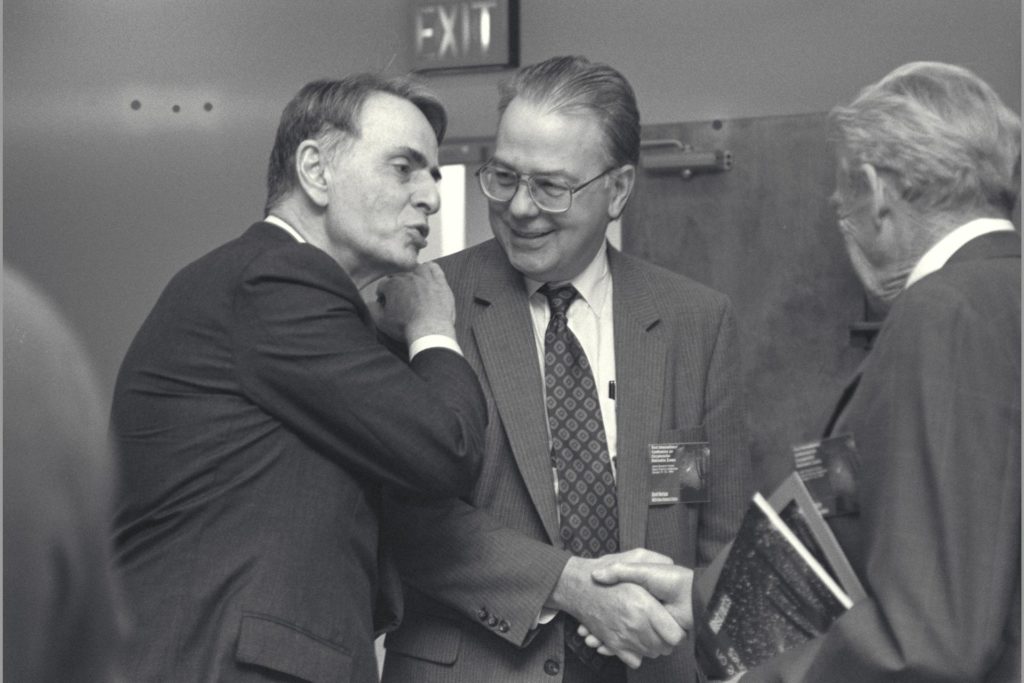
Sagan’s love for cannabis was purposely quiet and cautious.
During the ‘60s and ‘70s, some social acceptance of cannabis was in-progress but still shrouded in taboo. A number of individual US states showed interest in cannabis and a lot of research was underway, yet antiquated federal laws tarnished its reputation. Many believed cannabis was simply a stoner drug for hippies, delinquents, and losers destined for eventual psychosis, addiction, and death.
He, therefore, chose to keep his name away from the spotlight, advocating for cannabis behind the pseudonym “Mr. X” in fear of ruining his chances of becoming a professor at New York’s prestigious Cornell University. He couldn’t let the aforementioned taboos surrounding cannabis ruin his chances, but he still knew his truth about cannabis mattered, irrespective of his fears over potential career suicide.
Hidden behind this pseudonym, Sagan—or, rather, Mr. X—penned a now-famous anonymous essay in 1969 for Lester Grinspoon’s book Marihuana Reconsidered.
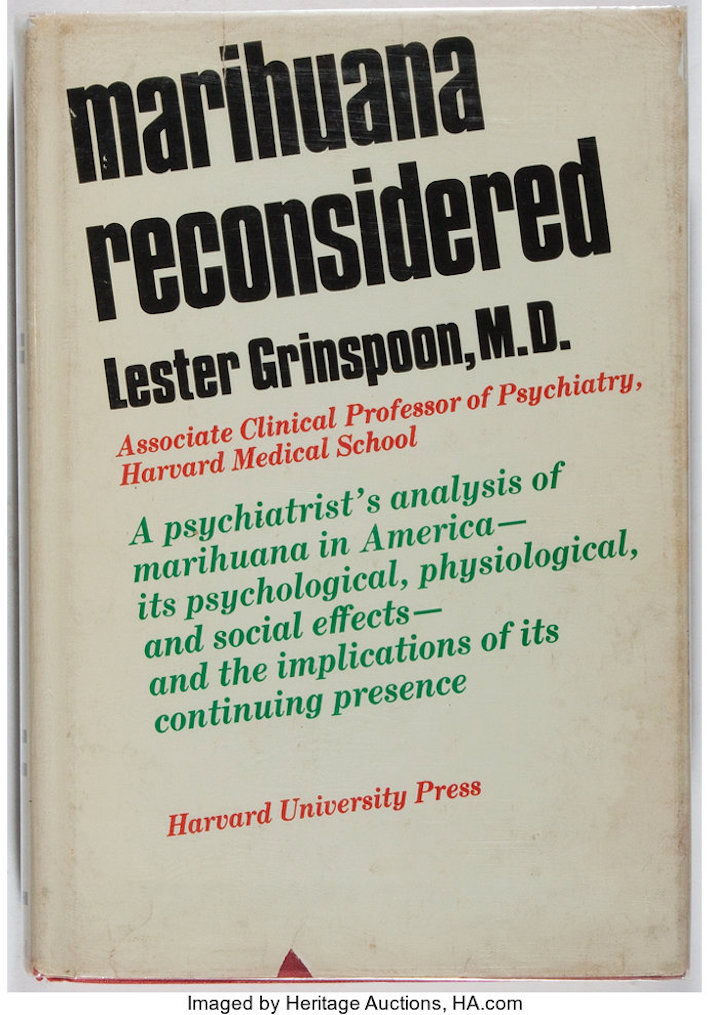
The essay, which wasn’t published until 1971, reads like a love letter written by a man who deeply cherished the cannabis-induced moments he experienced. His recollections are vivid and, at times, comical. But there’s a serious undertone to the entire piece, one that hits harder the more you read it.
Cannabis showed Sagan the beauty of art (and why it happens)
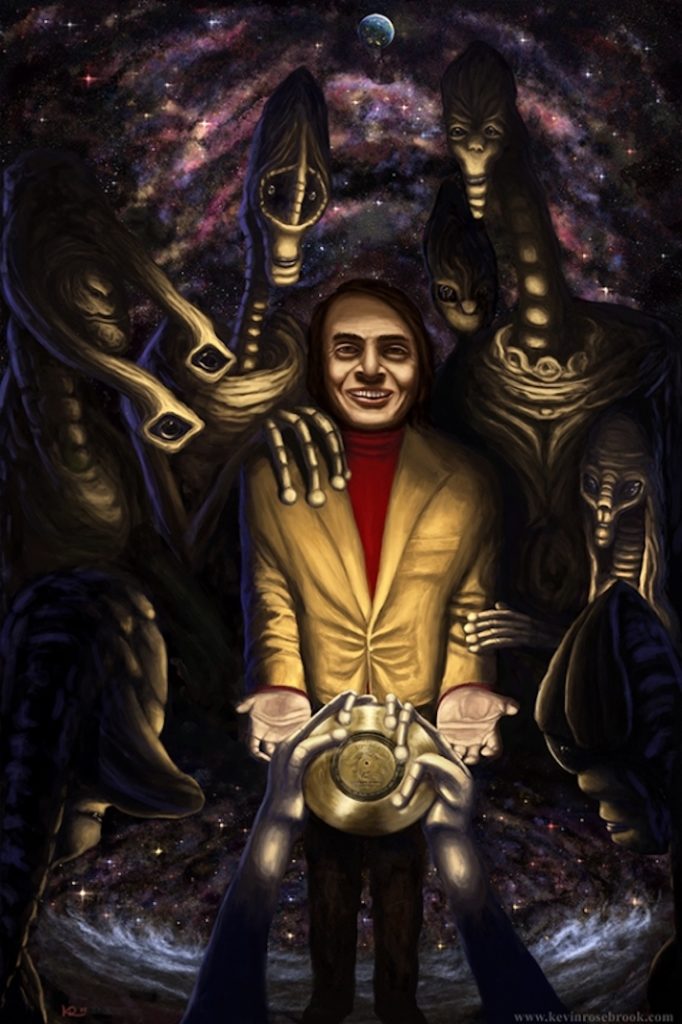
Sagan’s first love was science. At the age of four, his parents took him to the 1939 New York World’s Fair. He saw exhibitions that helped shape his inquisitive and curious nature. His dedication to science was cemented there and then.
Throughout most of his academic life, art just wasn’t on his radar, which isn't surprising for someone who was so invested in (and curious about) scientific exploration. He became president of his high school’s chemistry club. He won prizes for his essays on advanced lifeforms from other planets. He earned a B.S, M.A., and Ph.D. in physics from top-end colleges and universities.
The mechanisms of the outside world and how they worked took precedent over the creative fields (for the most part anyway).
But cannabis use turned it around for him.
The cannabis experience has greatly improved my appreciation for art, a subject which I had never much appreciated before. The understanding of the intent of the artist which I can achieve when high sometimes carries over to when I’m down. This is one of the many frontiers which cannabis has helped me traverse.
To be honest, art always looks better after a joint or two, and Sagan knew it as well. But what’s fascinating about his recollection is the way cannabis gave a logical and scientific-minded individual newfound respect for art and the artist’s intent.
So, why did this happen?
“Hyper-priming” is partly responsible for Sagan’s appreciation for art
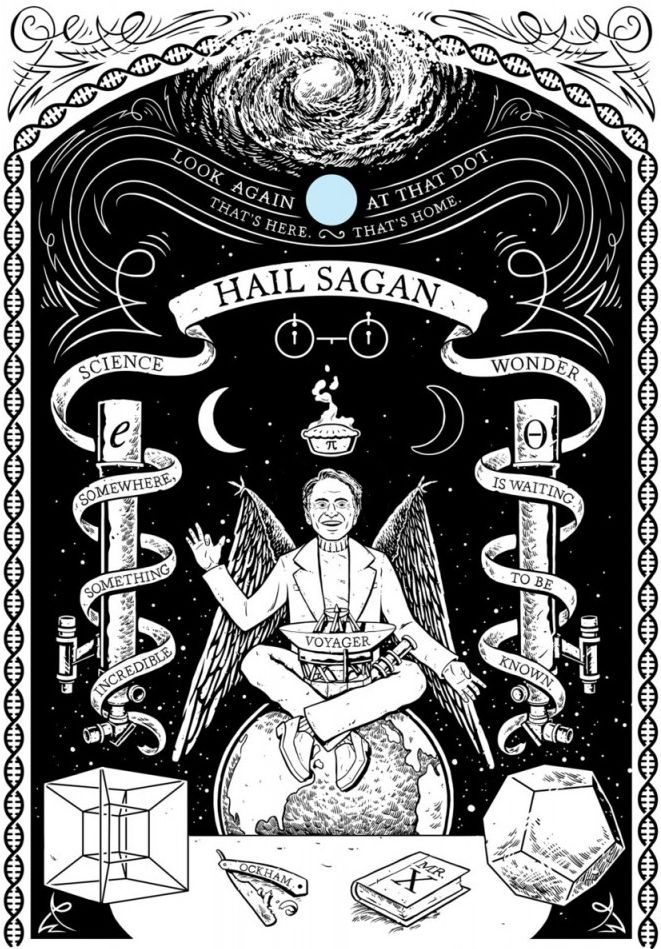
Cannabis consumption is a creative person’s best friend due to a number of different cannabis compounds interacting with the brain.
Research suggests cannabis compounds—notably tetrahydrocannabinol (THC) and its homolog tetrahydrocannabivarin (THCV)—can induce a phenomenon known as “hyper-priming”. This phenomenon allows the brain to form connections between two (or more) ideas, even if they’re seemingly unrelated.
In other words, when you’re high and look at a piece of art, you formulate several abstract meanings behind the artists’ artwork, similar to playing a game of connecting the dots.
Cannabis gave Sagan an appreciation for food (and why it happens)
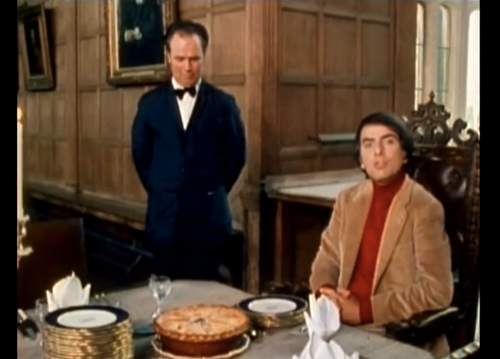
Sagan’s heightened enjoyment of food is inadvertently comical. He describes how food flavors and aromas are “amplified” while high. He’s far more attentive to the sensation each bite gives him, something not always appreciated when sober.
A potato will have a texture, a body, and taste like that of other potatoes, but so much more.
Potatoes, while an excellent source of nutrition, aren’t anything special (apologies to any potato lovers out there!). On their own, they’re quite bland. After cannabis consumption, however, something as simple as a batch of cooked potatoes had the flavor, texture, and shape like no other he’d experienced before.
Essentially, Sagan enjoyed what we now know as “the munchies”.
“The munchies” refers to an increased appetite and desire for food, typically 30 minutes to two hours after cannabis consumption. Food cravings usually revolve around carbohydrates, fats, or sugars. Often very intense. Many describe it as a feeling similar to an empty belly.
We typically believe this phenomenon is caused by the simple fact we haven’t eaten enough and in need of some excellent—albeit mostly unhealthy—food. There’s actually much more to it than that.
Sagan’s appreciation for food was the result of THC’s effect on brain activity
The reason why Sagan’s appreciation for food increased after cannabis consumption is mainly the result of THC acting on the receptors and neurotransmitters in the brain.
Research shows THC’s binding affinity with receptors in the olfactory bulb, a brain region responsible for transmitting smell information to the brain. This binding affinity enhances your ability to smell, making food almost disproportionately more desirable than when sober.
THC also interacts with your brain’s nucleus accumbens receptors, escalating the production of dopamine (the pleasure hormone normally released when you eat). When dopamine production escalates beyond normal levels, pleasure from food flavor and aroma does too.
Cannabis boosted Sagan’s productivity (and why it happens)
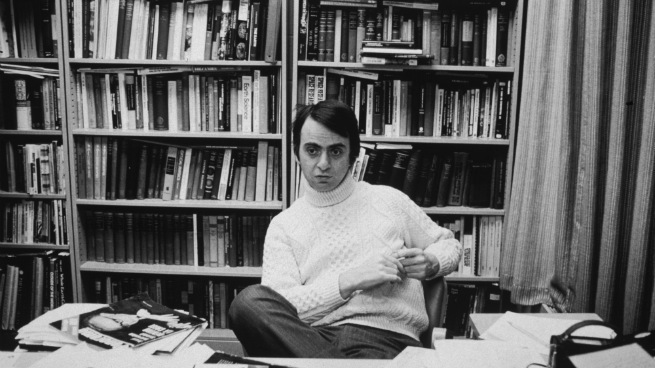
In a fleeting but profound confession halfway through the essay, Sagan admits cannabis gave him more insight into social issues, something he didn’t have much expertise in (nor thought about as much as other intellectual fields).
This spark of intellectual curiosity caused a significant chain of events in terms of productivity. He went from one cannabis-induced shower thought to creating a large amount of work in a very short space of time.
I remember one occasion, taking a shower with my wife while high, in which I had an idea on the origins and invalidities of racism in terms of gaussian distribution curves…I drew curves in soap on the shower wall, and went to write the idea down. One idea led to another, and at the end of about an hour of extremely hard work, I found I had written eleven short essays on a wide range of social, political, philosophical, and human biological topics.
This increase in productivity isn’t shocking to frequent cannabis users but may come as a surprise to those who’ve never sparked a joint in their lives.
Many people wrongly believe cannabis is a lazy person’s drug capable of temporarily locking you to your couch watching endless amounts of Netflix. This certainly isn’t true. Cannabis does, in fact, boost productivity. You just have to know which cannabis strain is better for productivity than others.
A cannabinoid and terpene combo may have boosted Sagan’s productivity
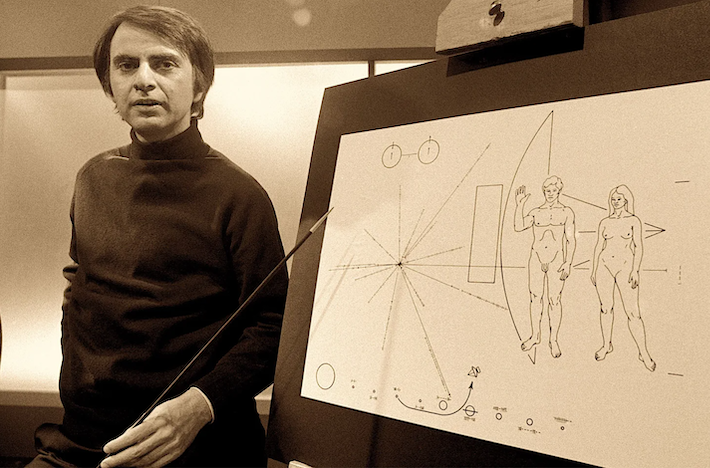
We imagine Sagan smoked a Sativa strain of cannabis. Sativa cannabis strains are said to boost productivity, focus, and concentration while keeping you energized. On the flipside, Indica cannabis strains commonly do the opposite, making you feel relaxed, drowsy, and tired.
The reason why Sagan may have felt a short, sharp boost in focus, concentration, and productivity are terpenes interacting with cannabinoids — primarily cannabidiol (CBD) and THC. Terpenes such as alpha-pinene, limonene, and beta-caryophyllene are said to act as mood, focus, and concentration-enhancers when combined with CBD and THC.
Some research, however, suggests cannabis has the opposite effect. A recent study conducted by the University College London (UCL) found cannabis negatively affects short-term motivation to carry out and complete simple tasks. They discovered that even a single joint can disrupt motivation.
The study didn’t disclose the cannabis strain used, which leaves a lot to be answered. Participants most likely consumed a strain known to cause demotivation and/or lethargy.
Sagan believed in the legalization of cannabis
When Sagan wrote this essay in 1969, cannabis had been practically illegal at the federal level for over 30 years under the Marihuana Tax Act. Over 25 US states had completely criminalized its sale, possession, and use. Public perception of cannabis was also less than positive.
A year later, the Controlled Substances Act was enacted and signed by Richard Nixon. Cannabis was placed under Schedule I alongside heroin, ecstasy, and LSD, meaning it “had no accepted medical use and a high potential for abuse”. Cannabis had, therefore, become officially illegal across the United States.
By the time the essay was published in 1971, Nixon declared an official “War on Drugs” to combat illicit drug use. Drug users were considered enemies of the state and ostracized for their attack on the moral values of America. As the years went on, drug-related incarcerations increased dramatically. Cannabis-related offences made up a large percentage of these incarcerations.
The historic prohibition of cannabis clearly wasn’t something Sagan agreed with. By the end of the essay, his stance couldn’t be any clearer.
The illegality of cannabis is outrageous, an impediment to full utilization of a drug which helps produce the serenity and insight, sensitivity and fellowship so desperately needed in this increasingly mad and dangerous world.
Sagan’s views on cannabis after Marihuana Reconsidered
Sagan continued to advocate for cannabis, though his career still prevented him from doing it openly for the most part.
His eventual and increasing scorn for the War on Drugs was concealed in fear of public backlash and losing his beloved position at NASA (NASA made him sign an oath not to partake in cannabis use in the late ‘80s).
According to recently published documents by the Library of Congress, Sagan wrote four boxes full of letters to the Drug Policy Foundation, an organization designed for debate and opinion around the United States’ drug policy.

He questioned the scientific validity of strict drug policy and vehemently opposed commercials made by the Partnership for a Drug-Free America for making “gross distortions of the scientific facts”.
He also questioned why all drugs are lumped together in American rhetoric and public policy questions, what the views of other nations are surrounding drug use, and how the US is ignoring scientific evidence in favor of a blanket drug ban.
Sagan’s rare public take on cannabis for medical use
Despite Sagan’s partially closeted cannabis advocacy views, he did participate in a rare and candid recorded interview. We’re currently unsure of where this interview came from or who he did the interview with. All we know is it’s one of the only recorded pieces of evidence showing Sagan’s pro-cannabis stance.
Here are some takeaways from the interview:
- He speaks about terminal cancer and AIDS patients being given large doses of chemotherapy, leaving them unable to eat, resulting in weakness and nausea
- He states that it’s well-established that “marijuana counteracts this nausea” and legal research has shown this to be true
- He questions why these patients across the US are prevented from consuming marijuana despite the research, calling it irrational
Posthumous information on Sagan’s cannabis use prior to death
Carl Sagan sadly died from chronic bone marrow disease (myelodysplastic syndrome) and acute pneumonia. Due to the nature of treatment and the symptoms of the condition, as well as pneumonia, he found it difficult to consume food and frequently lost his appetite.

In an interview with Marijuana.com, Sagan’s widow and current cannabis activist, Ann Druyan, spoke of his cannabis use in the months leading up to his death. She said it helped combat his loss of appetite and extreme nausea.
Cannabis is known to induce hunger and prevent nausea in those with health conditions
Sagan’s experience with cannabis as a treatment for loss of appetite and increased nausea wasn’t a one-off. Cannabis is known to induce hunger in patients suffering from a whole range of conditions. It’s also known to reduce nausea symptoms as well.
Conditions that are known to suppress or eliminate appetite include:
- Anorexia
- Anxiety & depression
- Alzheimer’s and dementia
- Cancer
- Hepatitis
- HIV/AIDS
Conditions that are known to cause nausea & vomiting include:
- Chemotherapy
- Migraines, cluster headaches, and vertigo
- Crohn’s disease
- Bulimia
- Liver failure
Cannabis to tackle chemotherapy side-effects is promising
In the case of chemotherapy-induced nausea, vomiting, and loss of appetite, cannabis’ benefits and effects are well-documented.
An early 2001 review of cannabinoids put cannabis in a favorable light for chemotherapy side-effects. The authors note cannabis consumption was more effective than pharma-based antiemetics such as prochlorperazine, metoclopramide, chlorpromazine, thiethylperazine, and haloperidol. Positive side-effects also occurred: sedation, drowsiness, and euphoria.
However, negative side-effects occurred as well, including acute depression, paranoia, dizziness, and fatigue.
Later, in a 2019 review on the opportunities for cannabis in the supportive care for cancer, the authors note the limited research into cannabis’ effectiveness, though they remain positive.
Across each individual study they looked into, cannabis has the potential to help with cancer treatment, palliative care, and survivorship. They believe many cannabis phytocannabinoids can ease many cancer and chemotherapy symptoms. Loss of appetite can be reversed thanks to THC.

